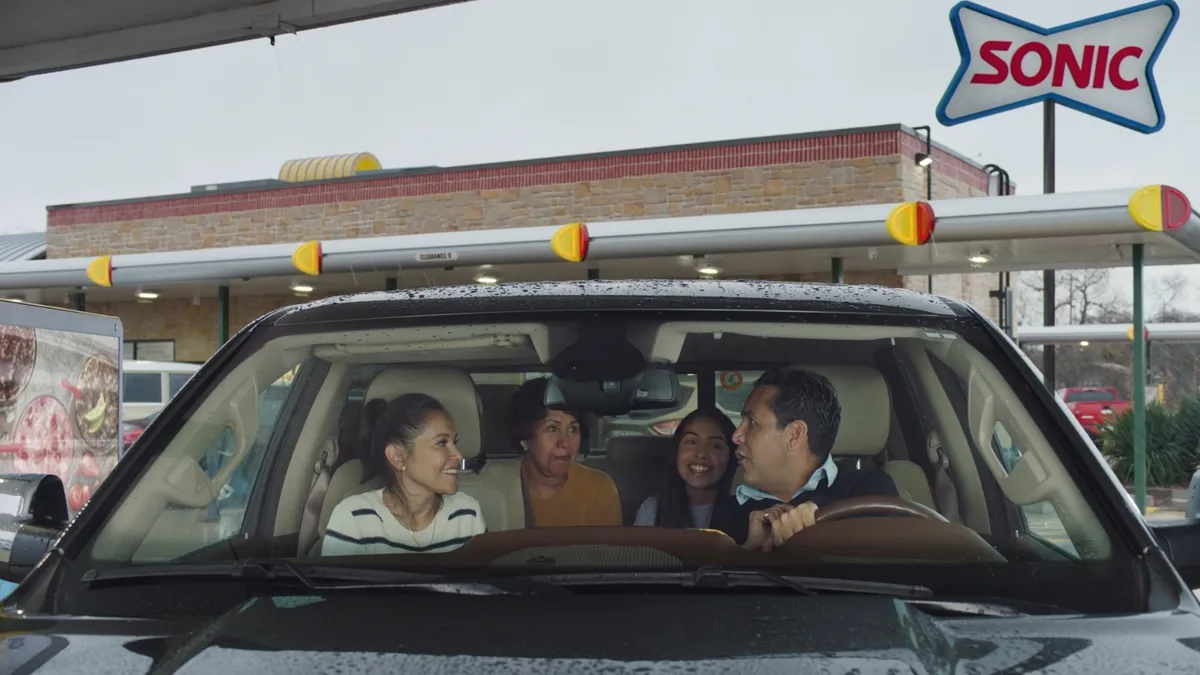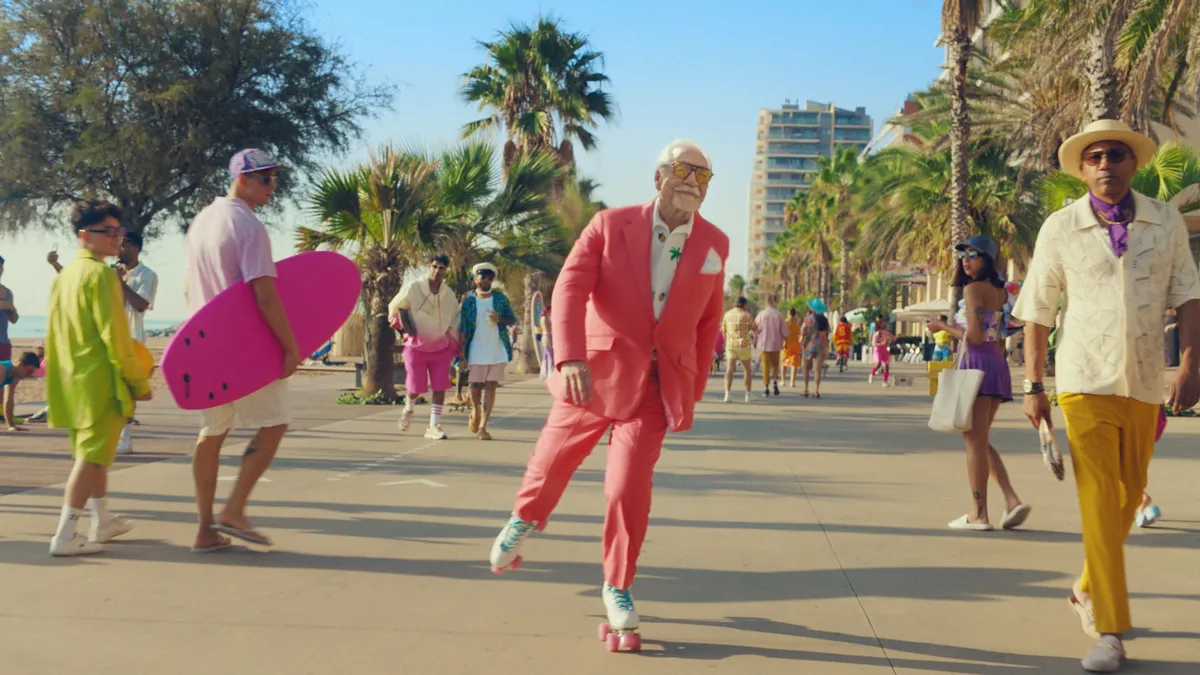Less than a month before the coronavirus pandemic upended daily life in the U.S., Sonic Drive-In revealed a new ad campaign and brand identity that reworked or abandoned elements that had been in place for years, if not decades.
The brand's iconic "Two Guys" — improv comics T.J. Jagodowski and Peter Grosz who had bantered about the drive-thru chain in popular ads that began in 2002 — were phased out and replaced with four different real-life families. Along with the new campaign, the brand reworked its visual elements and the physical locations of its restaurants.
"Brands need to evolve with their customers, gradually evolving with consumer behaviors, tastes and trends over time... Sonic hadn't had any meaningful identity change in decades," Ryan Brazelton, executive creative director at ChangeUp, which handled Sonic's brand identity and restaurant prototype work, said via email.
While many brands would go on to refresh their look and feel as the year wore on, Sonic happened to be ahead of the game. But it was also in the position of ditching familiar faces, just as the pandemic was starting to push consumers to seek comfort through the familiar and nostalgic.
Despite the fortuitous — or perhaps problematic — timing of launching a brand refresh as the pandemic kicked off, the changes were the result of a long-term look at how best to deliver the drive-in's brand story, said chief marketing officer Lori Abou Habib, explaining how the brand moved away from the "Two Guys."
"We really wanted our broader user base to see themselves reflected in our advertising," Abou Habib said. "People use Sonic for major and minor milestones in their everyday life… we saw an opportunity to be more woven into that fabric and reflect those experiences back in our ad campaign."
A new AOR and a rare pitch
For the campaign, Sonic tapped Mother, which came on as AOR in August 2019. But unlike most pitches, Mother was not tasked with starting from scratch.
"It's very rare that you enter a pitch where the previous work is successful — that's just not the way things normally happen. The slate was not quite as blank as it usually is," said Joe Staples, Mother's executive creative director.
Instead, Mother worked within the framing of Sonic's previous ads, switching from an improv comedy construct to a reality TV one, using a reality TV crew and eschewing scripts. Instead of two guys, the ads feature families communicating about the charms of the Sonic experience from prompts.
Shifting from the informational, educational "This is how we Sonic" campaign to the new "This is how you Sonic" effort allowed the brand to demonstrate how its drive-ins and nearly limitless menu combinations contribute to consumer freedom. But that didn't mean totally abandoning the comic tone of the "Two Guys" commercials that had become part of the brand's voice.
"I think the new campaign gives the opportunity to dimensionalize that sense of humor across a variety of different experiences," she said.
While internal data suggested it was time to move to a campaign that was more representative of its consumer basis, the change was not without its challenges.
"As we had been monitoring our brand and advertising KPIs, we saw an opportunity and actually went specifically to consumers, and got their feedback and their permission to expand the campaign. We've been really pleased with the launch of those results," Abou Habib said. "Starting in March, obviously, I think there was certainly some like, 'Well, when are the guys coming back?' but as we were able to build some momentum, we were able to really evolve into consumers looking forward to the new casting elements."
The new ads feature families and friend-group families that are multigenerational, covering different backgrounds, ages and relationships. The representational nature of the ads is an effort to imbue them with greater authenticity.
"As opposed to just two guys, it's nice to have 10 or 15 different families," in the ads, Staples said.
Presaging the COVID era
The new, family-focused spots also presaged a major need of marketers in 2020: commercial shoots that complied with social distancing and other COVID-19 safety protocols. Family units were shot in their own cars at Sonic drive-ins by socially distanced crews. In that way, Sonic's drive-ins became a resource for production.
"We basically built a pandemic-proof campaign with pandemic-proof production and didn't really know we were doing it," Staples said.
Sonic's drive-ins were also a force that mitigated against the negative effects of the pandemic, as both a source of nostalgic joy and as a safe way to dine out with friends and family during the crisis. And like other QSR and fast food restaurants that were able to weather the worst periods of the year, Sonic has been investing in its digital infrastructure for years, from off-premise ordering through its app and digital menu boards at its locations. Now, the digital components of service were offering more than just personalized greetings, but contactless ordering, as well.
"There are definitely a lot of capabilities in the digital space that resonated with consumers, and having that really seamless experience and being able to deliver the personalization was a big win for us," Abou Habib said.
The chain is working to build up those digital capabilities in 2021, whether that means off-premise, order ahead capability or getting stronger in digital channel communications.
"There has been a lot of learning as we've had more and more customers in that ecosystem, where we can see the path forward on features and where we can really add some value in the digital experience," she said.























